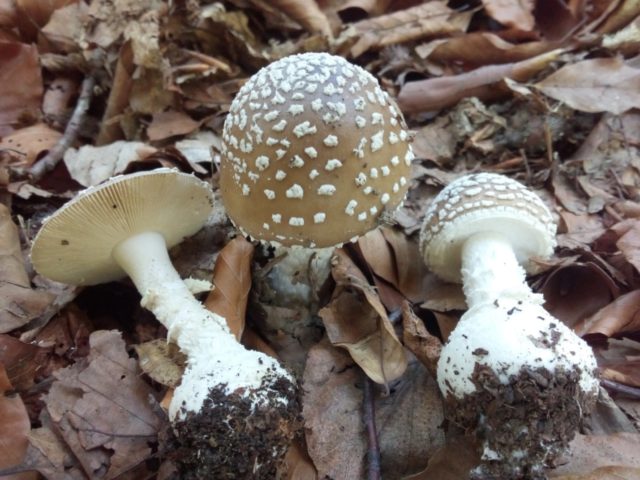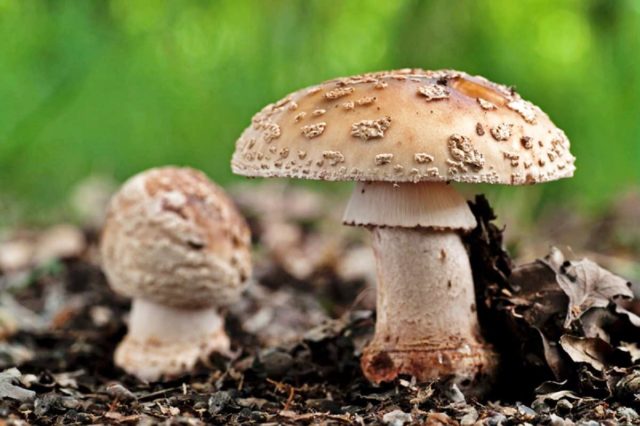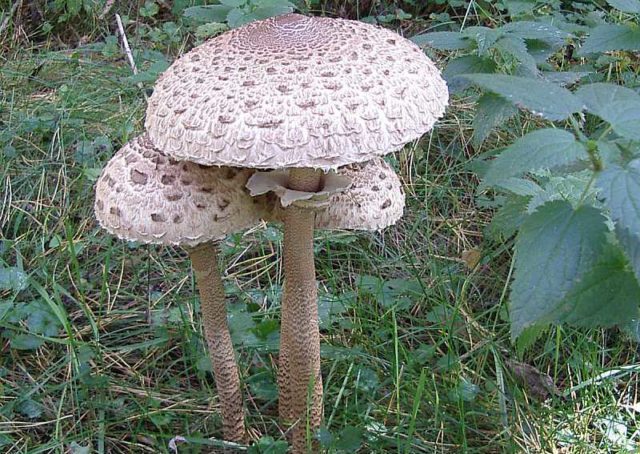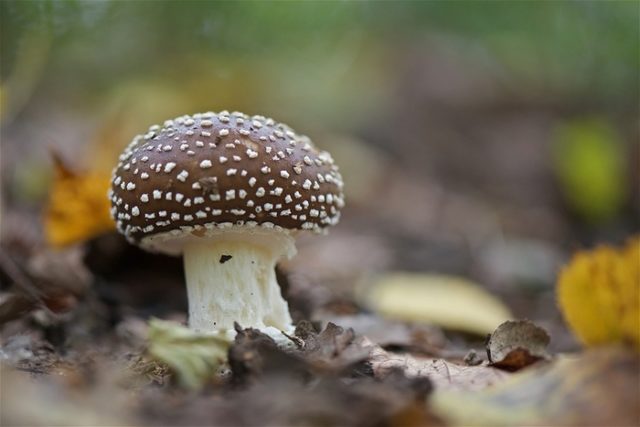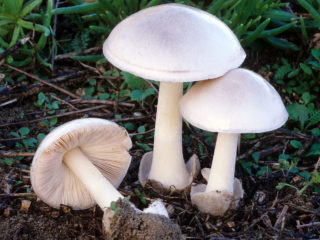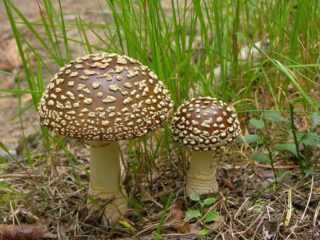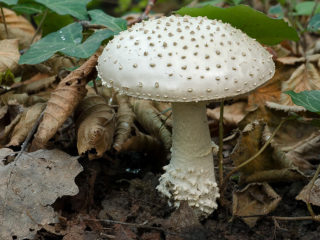Content
The mushroom kingdom is amazing and diverse. Not all of its representatives are harmless to humans. Eating certain mushrooms can cause severe poisoning or even death. But even these types can be of considerable benefit, since they have a pronounced medicinal effect. These mushrooms include the panther fly agaric, which combines both mortal danger to humans and significant healing power.
Description of panther fly agaric
Amanita muscaria is one of the most recognizable mushrooms, as a rule, even children can easily identify them. Representatives of this family have a number of distinctive external features that make it possible to unmistakably recognize them among many others.
All of them are characteristic of the panther fly agaric. It belongs to the Amonitov family, in Latin its name sounds like Amanita pantherina. The main distinguishing features of this mushroom are shown in the table:
Parameter | Value |
Names synonyms | Amanita muscaria, fly agaric leopard |
Mushroom type | Lamellar |
Classification | Inedible, highly poisonous |
The form | Umbrella |
Smell | Weak, sweetish, unpleasant |
Pulp | White, sweetish in taste, does not change color at a break |
Below is a more detailed description of the main parts of the panther fly agaric.
Description of the hat
The hat of a young panther fly agaric has an almost spherical shape. As the fungus grows, it becomes more and more flat, while the edge remains slightly curved inward. The hat of an adult specimen can reach 12 cm in diameter, while it has the shape of a regular circle.
The upper skin is thin, tinged with gray-brown or brown-brown colors of varying intensity. On top of it there are numerous white flocculent growths that are easy to pinch off. The hymenophore (reverse side of the cap) is lamellar, does not grow together with the stem. The plates are white, even, fragile; as the fungus ages, dark spots may appear on them.
Leg description
The leg of the panther fly agaric is smooth, usually in the form of a cylinder or a regular truncated cone, slightly tapering upward. In the lower part there is a characteristic hemispherical thickening - a tuber. The leg is hollow inside, it can grow up to 12-15 cm, while its thickness reaches 1.5 cm. It is painted white.
Quite often, the leg has a ring-shaped outgrowth, although there are specimens without it.On the surface there are numerous white flaky outgrowths-hairs, resembling wood shavings.
Doubles and their differences
Amanita muscaria can be confused with other representatives of the same family. Its counterparts include the following mushrooms:
- Amanita is gray-pink.
- Mushroom umbrella.
What is the difference between panther fly agaric and gray-pink
According to the classification, the gray-pink fly agaric belongs to conditionally edible, and it is quite possible to eat it after preliminary heat treatment. Its main difference from the panther is the change in the color of the pulp in case of mechanical damage. The gray-pink fly agaric on the cut begins to slowly turn pink. Another difference is the shape of the ring. In the panther fly agaric, it is weak, often located in the lower part of the leg. In gray-pink, the ring is strongly pronounced, it is hanging, located in the upper part of the leg.
Another difference is the shape of the leg. In the gray-pink fly agaric, it often has the shape of an inverse cone, tapering downward. At the same time, the Volvo in the lower part of the leg in this species is weakly expressed or completely absent.
How to distinguish a panther fly agaric from an "umbrella"
The umbrella mushroom is another twin of the panther fly agaric. This species is also edible, moreover, it is highly valued for its excellent taste and the ability to eat without preliminary heat treatment. The umbrella mushroom belongs to the Champignon family, outwardly it looks like a panther fly agaric, however, it has a number of distinctive features:
- It can reach significant sizes, often the head of the umbrella mushroom grows up to 25-30 cm in diameter, and the leg grows up to 40 cm, while its thickness can reach 4 cm.
- After opening, in the center of the umbrella mushroom cap, a characteristic influx always remains.
- The leg is covered with small brown scales.
- The ring is wide, filmy, broken.
- Volvo is missing.
- The smell of mushroom is rather weak.
Umbrella mushrooms, in turn, have their poisonous counterparts, such as lead-slag chlorophyllum and dark brown chlorophyllum. They are much smaller in size, and they grow in North America, so mushroom pickers in Russia have quite a few chances of encountering them. A distinctive feature of false umbrella mushrooms is the reddening of the color of the pulp with mechanical damage.
Where and how it grows
The growing area of the panther fly agaric is very wide. It can be found in deciduous and mixed forests of the temperate zone of the European part of Russia, as well as in Siberia and the Far East. The mycorrhiza forms mycorrhiza with many trees, both coniferous and deciduous, but most often with oak or pine. Mass growth of the fungus begins in July and continues until mid-September. The fungus is undemanding to the composition of the soil, however, it is more often found on calcareous, and sometimes even on very poor, strongly alkalized soils.
As a rule, the panther fly agaric grows in single specimens, groups are quite rare. An interesting video about him can be viewed at the link:
Edible panther fly agaric or poisonous
The panther fly agaric belongs to the highly poisonous mushrooms, therefore, it is strictly forbidden to eat it. The pulp of the fruit bodies contains such strong toxins as hyoscyamine and scopalamin, which cause general poisoning. In addition to these substances, it contains the alkaloids muscarine, muscimol, serotonin and bufotonin, which cause changes in consciousness by affecting the central nervous system. Therefore, the mushroom is not only highly poisonous, but also hallucinogenic.
Poisoning symptoms, first aid
Amanita muscaria poisoning occurs infrequently, primarily due to the good recognition of the fungus.Deaths after its use have not been documented, although some toxicologists consider this species even more poisonous than pale toadstool. The symptomatology of panther fly agaric poisoning is similar to the usual toxic effect on the digestive organs, characteristic of all poisonous mushrooms, but at the same time it is supplemented by symptoms of altered consciousness.
Here are the main signs of panther fly agaric poisoning:
- Cramps, cramps and stomach pains.
- Diarrhea and vomiting, sometimes with blood.
- Changing the size of the pupils.
- Rapid heartbeat, arrhythmia.
- Uneven breathing.
- Spasms, muscle cramps.
- Increased body temperature, chills, fever.
- Euphoria, incoherent actions, unreasonable activity and aggression.
- Visual and auditory hallucinations, seizures, fainting.
Symptoms usually appear within the first 20-30 minutes after eating the mushroom and progress over the next 6-8 hours. If you suspect a panther fly agaric poisoning, it is imperative to call a doctor or deliver the victim to the nearest first-aid post.
Before the ambulance arrives, you can reduce the toxic effect on the body by the following manipulations:
- Gastric lavage. If a little time has passed since the moment of eating, you need to get rid of the remnants of the fungus in the stomach. To do this, it is necessary to force the victim to drink a large amount of water, slightly colored with potassium permanganate, and then induce vomiting in him. It is better to do this several times for a more thorough cleansing of the stomach.
- Give the poisoned person an absorbent product. Such a measure will significantly reduce the absorption of toxins into the blood. As an absorbent, activated carbon is suitable (at the rate of 1 tablet per 10 kg of the victim's weight), as well as Eneterosgel, Polysorb or similar preparations.
- Reduce the victim of spasmodic pains and cramps in the stomach. This can be done by giving him 1 or 2 tablets of No-shpa (Drotaverin).
- Drink plenty of fluids. The victim needs to drink plenty of water to prevent dehydration caused by diarrhea. You can restore the salt balance using the drug Regidron, but if it is not available, then you need to add a little ordinary table salt to the water. You can use carbonate mineral water for drinking.
Why is the panther fly agaric useful?
Despite its extreme toxicity, the panther fly agaric is not devoid of useful properties. Preparations from this fungus have strong biological activity and are successfully used to treat the following pathologies:
- Joint diseases.
- Tumors of a different nature.
- Vascular sclerosis.
- Herpes.
The powder of the dried fruiting body of this mushroom is a strong wound-healing agent, therefore it is included in the corresponding ointments and creams.
It relieves muscle inflammation, including those of a traumatic nature. Amanita muscaria tincture is used as a remedy for impotence, as well as a medicine that stops the growth of malignant neoplasms and inhibits cancer cells.
The use of panther fly agaric in folk medicine
Even before science studied the panther fly agaric, ancestors successfully used it as a medicine. Here are some of the ways it can be used in traditional medicine:
- Dry crushed powder of amanita muscaria, mixed with oil, can be used as a remedy for rheumatism.
- If a dried mushroom cap is applied to an open wound, it will tighten very quickly.
- Amanita muscaria ointment is able to relieve pain and swelling at the site of a bruise.
- Tincture from the fruit bodies of this fungus is used as a remedy for warts.
Some interesting facts about panther fly agaric
Many interesting stories are associated with the panther fly agaric.According to ancient Germanic and Scandinavian legends, the infusion of these mushrooms in past times was taken by berserk warriors to bring themselves into a state of increased aggression and reduce the pain threshold. There is an opinion that the ancient Russian knights also used a similar mixture before the battle, but there is no documentary evidence of this.
Here are some more interesting facts about this representative of the Amonitov family:
- Fly agarics have long been used as repellents, that is, as a means to fight flying insects. From here they got their name. Flies never land on these mushrooms; even the fumes from them are fatal for them.
- Tincture of panther fly agarics is used by shamans when performing various religious rituals to escape from reality and immerse themselves in a state of altered consciousness.
- The psychoactivity of the panther fly agaric is about 4 times higher than that of its red counterpart.
- Due to the special clinical picture caused by eating this mushroom, the symptoms of panther fly agaric poisoning have received a separate name in medicine, known as "panther syndrome".
- The fruiting body of the panther fly agaric contains tropane alkaloids - substances more characteristic of poisonous plants such as datura and henbane.
Conclusion
Amanita muscaria is a clear example of the fact that even the most poisonous mushrooms can bring significant benefits. However, this does not mean that he is harmless. These mushrooms must be handled with great care. Only in skillful and experienced hands can it be useful, therefore, before doing anything with a panther fly agaric, you should definitely consult with a knowledgeable person.


